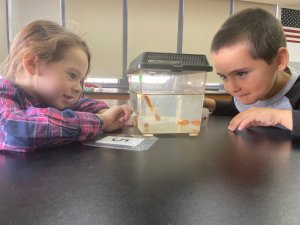Using hydrogeology models made by science consultant Claire Zurbuch, seventh-graders in Sharon Stotts’ science classes recently investigated how a variety of types of ground cover (grass, bare soil and concrete) impact the amount of water that runs off, seeps through and is retained by the soil.
CMS Science Investigation
Using hydrogeology models made by science consultant Claire Zurbuch, seventh-graders in Sharon Stotts’ science classes recently investigated how a variety of types of ground cover (grass, bare soil and concrete) impact the amount of water that runs off, seeps through and is retained by the soil.
Results varied due to conditions changing throughout the day, but scholars discovered that concrete has almost 100 percent run-off, but some of the water accumulated in puddles and eventually evaporated. On bare soil, approximately 80 percent of the water was collected as recharge water and about 10 percent was run-off water or retained by the soil. When the ground cover used was grass, about 60 percent of the water was retained by the soil and about 30 percent was collected as recharge.
Lab Helps First Graders Classify Animals
Our first grade pups spent some time in the science lab working to classify animals. Scholars traveled around to ten different stations working together to identify which animal group the provided examples belonged to. Scholars could choose from reptiles, fish, birds, amphibians, mammals, insects, and spiders. Teachers say they all did a great job of identifying and classifying each example.
















